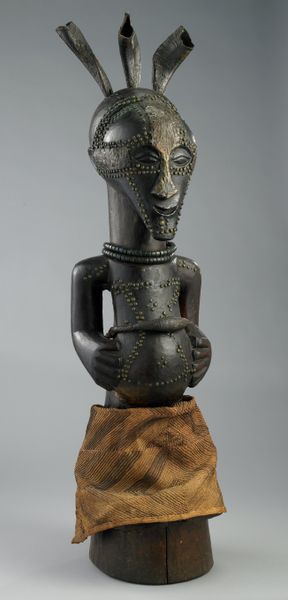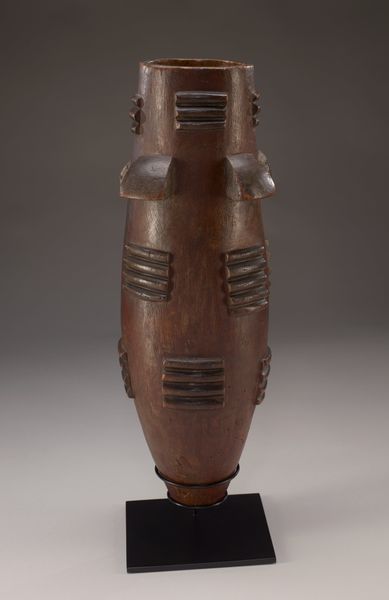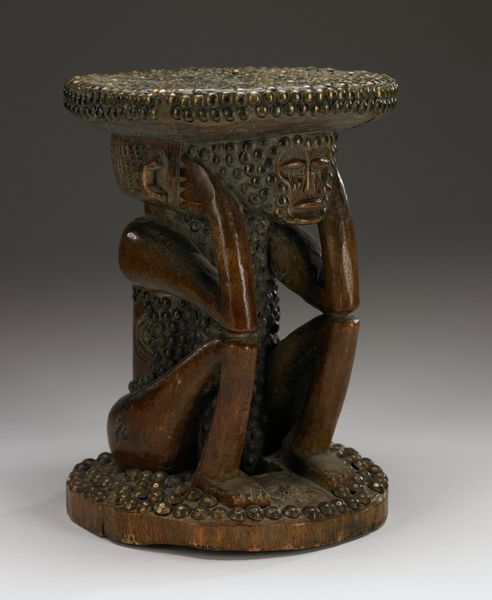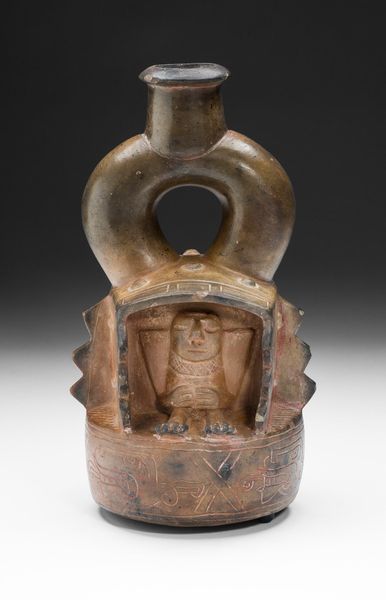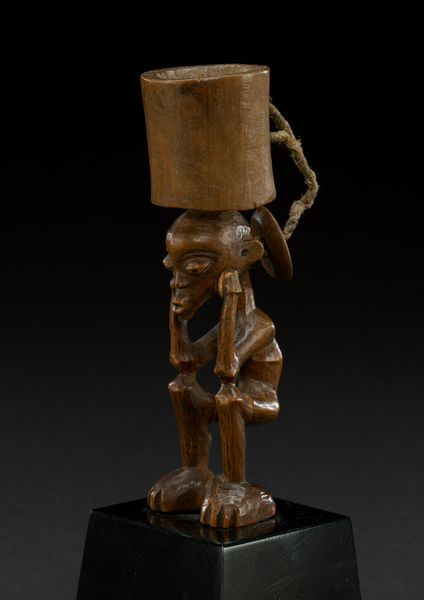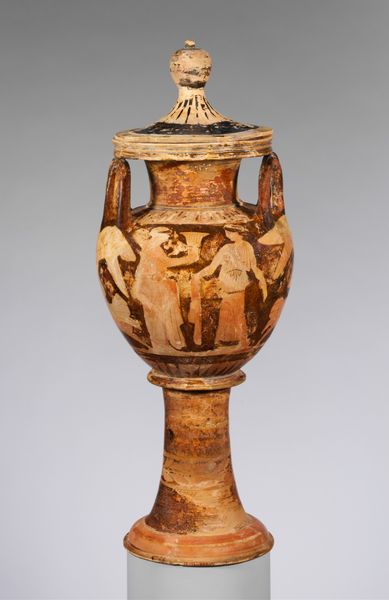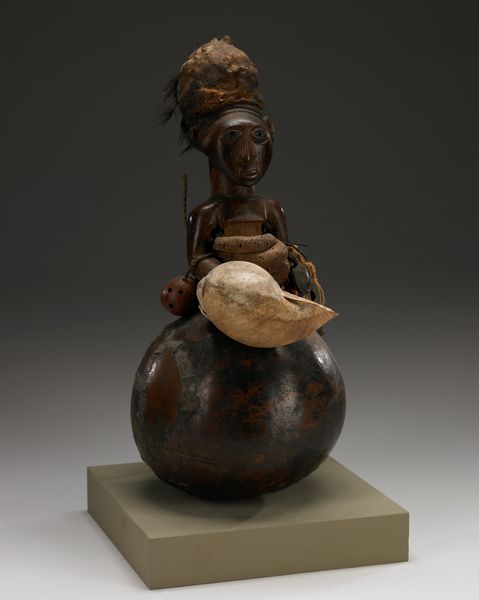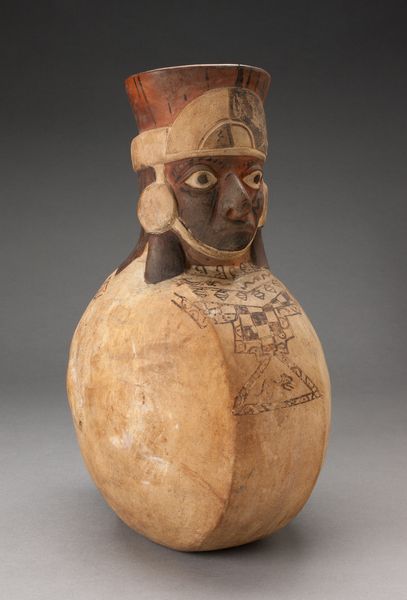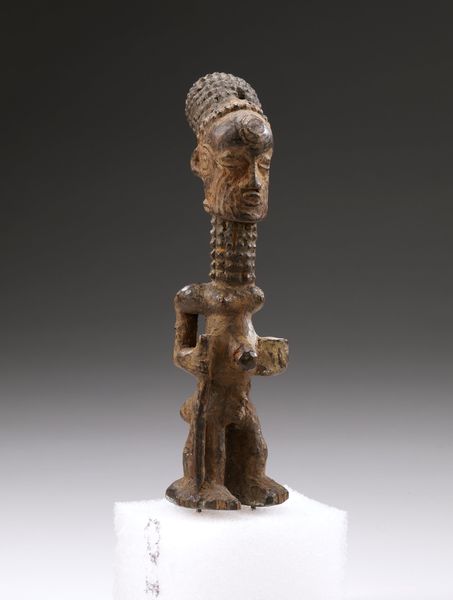
sculpture, wood
#
portrait
#
sculpture
#
figuration
#
sculpture
#
wood
#
musical-instrument
#
yoruba-art
Dimensions: 26 3/16 x 19 1/8 x 16 in. (66.52 x 48.58 x 40.64 cm)
Copyright: Public Domain
Curator: We're looking at a drum from the Akan peoples, made around 1950. It's a striking wood sculpture. Editor: It certainly is. My first thought is of labor and burden; that seated female figure, seemingly straining, yet serene despite carrying the drum. The warm wood grain gives a real sense of organic texture too. Curator: Yes, the sculpture is structured into distinct registers, isn't it? There's the cylindrical drum itself, held within a sort of latticework of carved figures, all supported by the seated female figure. The interplay of rounded and linear forms is rather sophisticated. Editor: Those supporting figures are interesting. There is definitely an ancestral and communal quality. Do they represent the individuals, perhaps lineage, responsible for carrying their traditions forward? Curator: Likely, though it also invokes ideas of sacrifice and endurance. Musical instruments such as this one are of deep symbolic importance, used in sacred rituals to evoke the divine. What is that hand gesture? Editor: With the pointing finger? That can mean many things depending on the context – power, declaration, perhaps even judgement. Consider that the drummer may hold the power in a ritual, literally setting the rhythm for proceedings, and perhaps dictating when things occur through song. Curator: The visual vocabulary certainly resonates on multiple levels. The drum skin secured with pegs also contributes to the complex structural unity. I also see the influence of Yoruba traditions in the expressive carving, an indicator of artistic exchanges that have defined West Africa for centuries. Editor: The weathering adds layers, doesn't it? It whispers stories of dances performed, rhythms tapped, and its past travels and preservation within sacred rites. All of this history adds depth, transforming this work into far more than a mere instrument. Curator: A testament to material culture and cultural memory, indeed. It showcases the potent dialogue that visual forms initiate. Editor: Absolutely. It leaves us with more questions than answers – which is, I think, what great art should do.
Comments
minneapolisinstituteofart almost 2 years ago
⋮
Akan communities in southern Ghana have a tradition in which popular bands compete in instrumental, choral, and dance performances. The master drum, sometimes identified as the “mother of the group,” is the musical and visual focal point of each band. The gesture of the woman, her finger pointing to her eye, may refer to the proverb, “If you can hear, can you not also see'”—emphasizing the importance of using all the senses. Or it may be a warning to the other bands: “Wait and see who is going to win.”
Join the conversation
Join millions of artists and users on Artera today and experience the ultimate creative platform.
